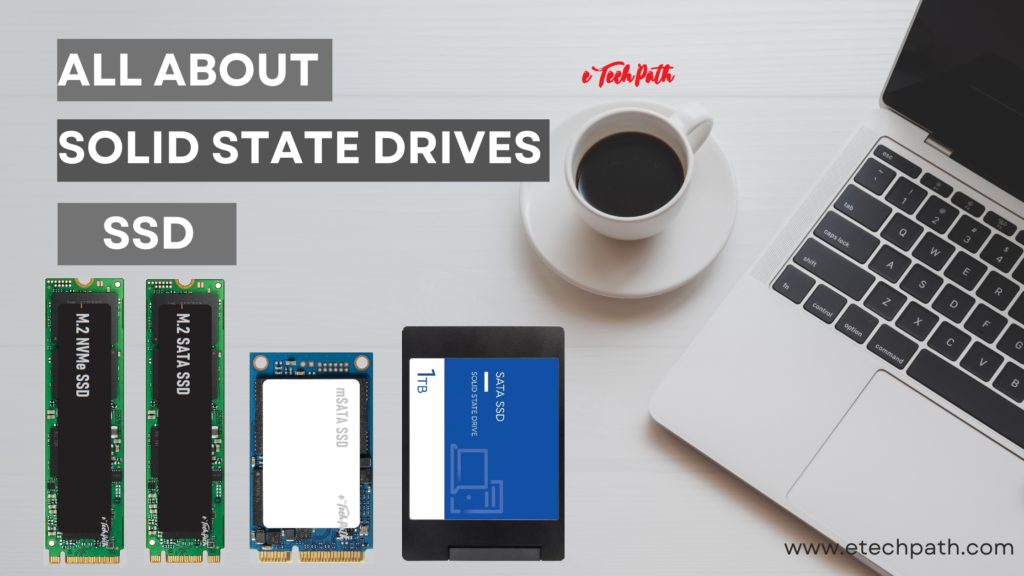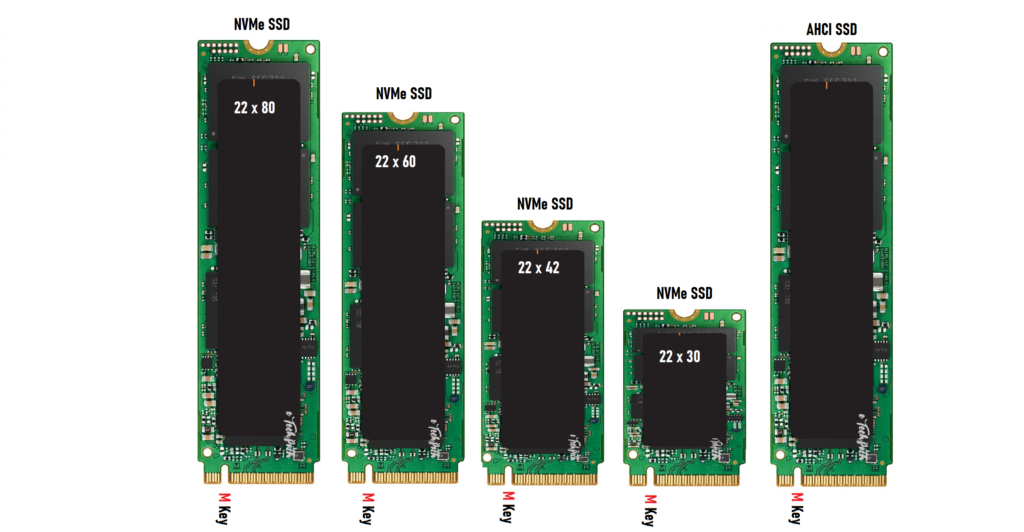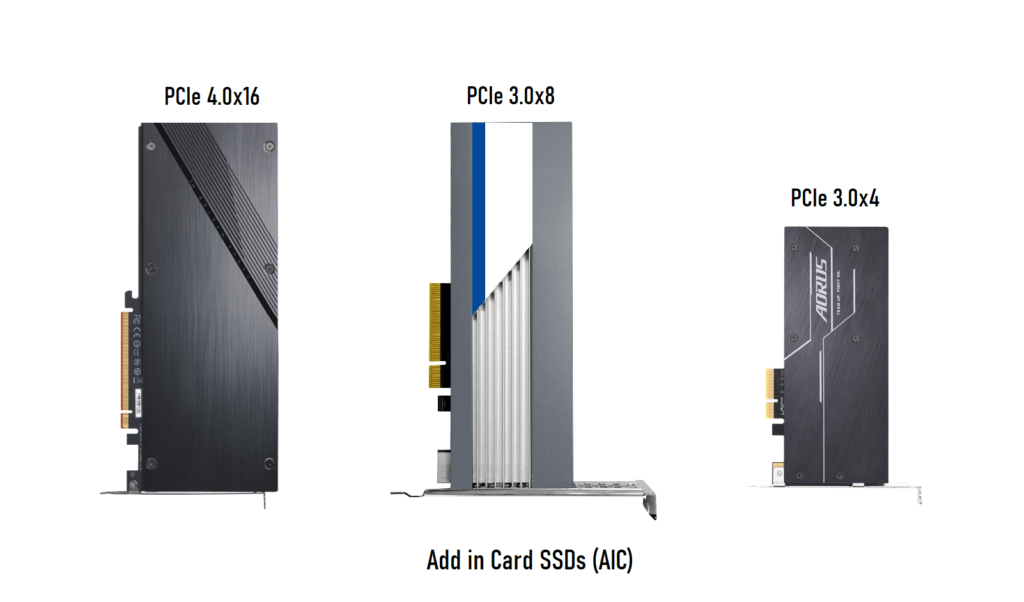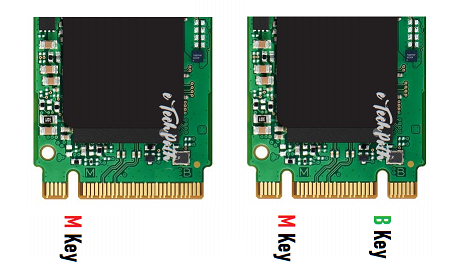
Introduction:
Solid state drive is a type of storage device that uses integrated circuit assembly to store digital data in it. Unlike conventional hard disk drives, SSD’s does not consist of mechanical moving parts which makes it more reliable and long lasting than conventional hard disk drives.
Advantages and Disadvantages of SSDs over HDDs:
Advantages:
- Solid state drives are way faster than the hard disk drives. HDDs can copy data at maximum 150MB/s, while common SSDs can copy the same data at 500MB/s. Also, some latest PCIe SSD’s can go more than 5500MB/sec transfer speed.
- Lifespan of solid state drive is longer than HDDs. Hard disc drives tend to last for around 5years, while SSD’s can last more than 10years.
- HDD’s has moving parts inside so they make little noise at the time of working. SSD’s are super quiet.
- SSD’s are very light in weight as compared to HDD’s.
- Power consumption of a solid state drive is very less as compared to a hard disk drive.
Disadvantages:
- The measure disadvantage of a solid-state drive is the cost. An SSD can cost more than double the cost of an HDD.
- Inability to recover old lost data. Which is possible in conventional hard disk drives.
Types of Solid-State Drives:
Solid state drives are available in two interfaces, one is SATA SSD and another is PCIe SSD.
SATA Solid State Drive:
SATA is one the most widely used interface in the industry. Latest SATA III 3rd generation standard provides 6Gb/s bandwidth with up to 550Mbps of read write speed. SATA SSDs are available in different sizes, shapes and slots, details are described below.

2.5inch SATA SSD: 2.5inch SATA SSD is a one-to-one replacement of conventional SATA HDD drive. It can give you up to 500mbps transfer speed. With SATA SSD you can upgrade any HDD laptop or desktop computer to SSD without any modification. (Desktop computers may require some reduction brackets)
mSATA SSD: A mSATA SSD is smaller in shape as compared to 2.5inch standered SSD’s. Also, the power consumption of mSATA SSD is comparatively less. These drives are designed to use in battery operated devices like laptops, notebooks and tablets, because of its small shape and power consumption advantage. mSATA SSD can provide data transfer rate up to 550mbps. mSATA SSDs are available in two sizes, standered size mSATA and half mSATA.
M.2 SATA SSD: M.2 is a next generation standard which provides both SATA or PCIe interface, one at a time. M.2 SATA SSD come in different sizes like 2280, 2260, 2242, where 22 represents the width in mm and next two numbers represent the length. M.2 SATA SSDs are generally comes in B+M key interface.
PCIe Solid State Drive:
PCIe interface SSDs provides many advantages than a SATA interface SSDs. The biggest advantage is speed. A latest 3rd generation SATA SSD can reach maximum 550Mbps read write speed, however a PCIe interface SSD can reach up to 3500Mbps speed.

NVMe SSD: NVMe (Non-volatile Memory Express) provides high bandwidth and very high data transfer speed in very low power consumption. NVMe SSD can reach up to 3000Mbps of read write speed. NVMe SSD comes in M.2 interface with different sizes like 2280, 2260, 2242, 2230, where number 22 represents the width in mm and next two numbers represent the length. NVMe SSD comes with M-key interface, which is only compatible with M key slotted system.
AHCI SSD: AHCI (Advanced Host Controller Interface) was widely used in mid period of SATA and NVMe, it was originally designed for use in conventional hard disk drives. The working structure of AHCI SSD layers between SATA and PCIe interface. AHCI was popular because, unlike common memory structure, AHCI allows SSDs to support native command queuing (NCQ) command set.
AIC SSD: AIC (Add in Card) SSD is compatible with your desktop computer PCIe port. So, if you don’t have dedicated M.2 SSD socket in your motherboard but you still want to use high speed NVMe SSD, then go for AIC SSDs. These SSDs will slide in directly in standard PCIe port. AIC SSD functions same as M.2 NVMe and provides same lightning-fast speed without having M.2 port on your system.

M.2 Kays and Slots
All M.2 modules are keyed in specific way to prevent incorrect insertion of module cards into female slot on the host. M.2 SSDs generally uses three common keys i.e., B-key, M-key & B+M-key. You can find key type printed on the edge of module card near golden connector pins.

In above picture, module card on the left shows NVMe SSD with M-key slot, which is compatible with only M-key female sockets on the host. Module card on the right shows M.2 SATA SSD with B+M-key slot, which is compatible with both M-key and B-key female sockets on the host.
Choose between M.2 M key or M.2 M+B key SSD
Considering the performance, you should choose M.2 M key SSD for the best results. But before getting your SSD make sure what type of slot is available in your computer.
In a computer, there is only a M.2 M key socket, or a M.2 B key socket will be available and not M.2 M+B key socket.
Let’s come to the compatibility of slots. M.2 M key slot is compatible with both M key SSD and M+B key SSD, But M.2 B key slot is only compatible with M+B key SSD.





